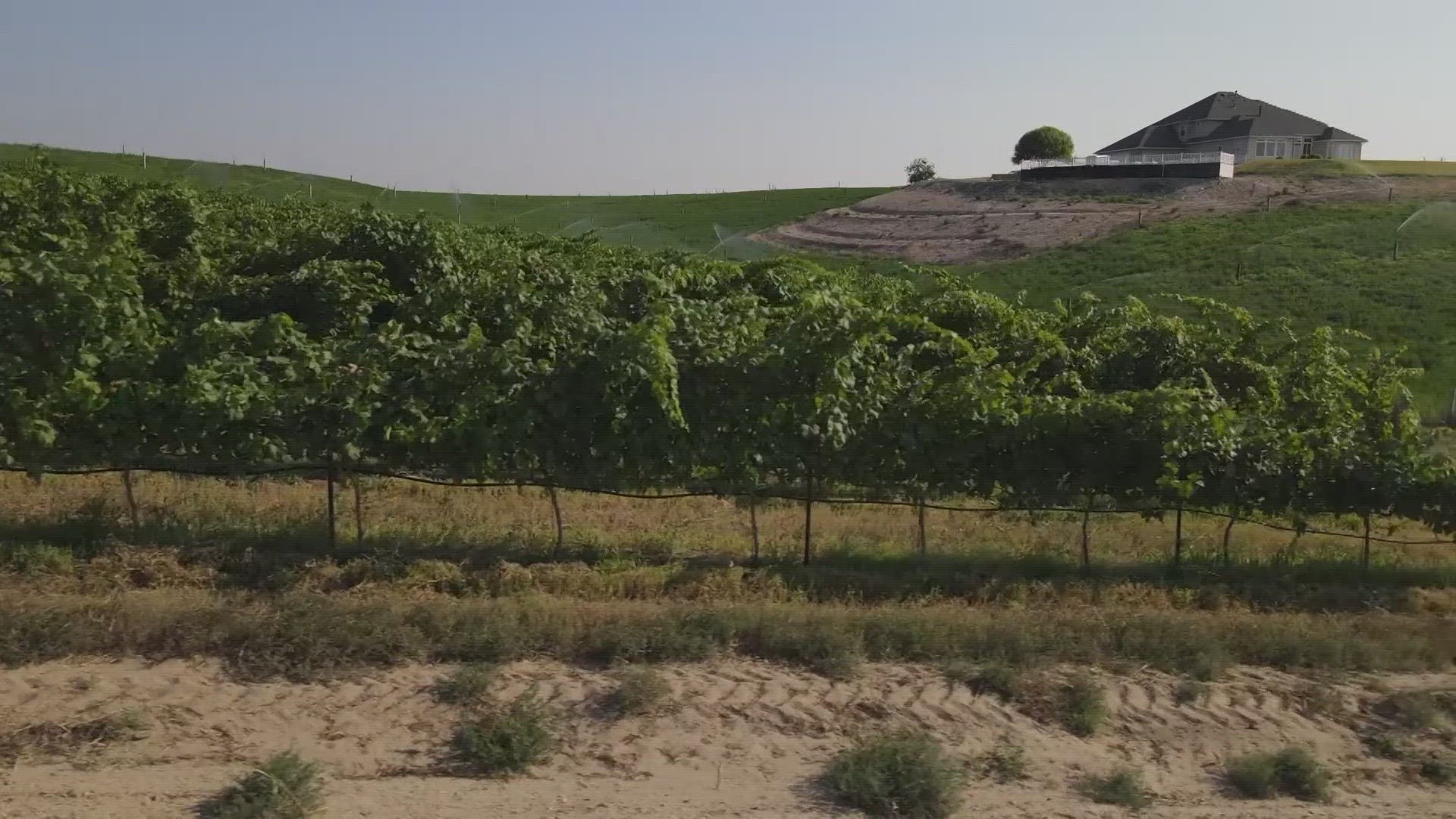WOODINVILLE, Wash. — During a period of changing climate and environmental factors, the wine industry in northwest states is continuing to see growth.
California continues to dominate the states in wine production, but both Washingtonand Oregon have both surpassed 1,000 wineries in recent years. Washington jumped from around 500 wineries in 2012 to double that just eight years later in 2020.
Brett Keller, winemaker for Mineral Wines, recently moved from California to Idaho because of climate issues he was facing in the golden state.
“We just needed to make a change from California,” he said, sitting on his new property just north of Eagle, Idaho.
Keller said the move north stems from the constant fires he faced in the Sierra Foothills of northern California. He said the cost of insurance was too high, the smoke was impacting his grapes and they had frequent power shutoffs that would ruin crops.
"When you harvest grapes and you can’t use your equipment because there’s no electricity, the grapes don’t keep. So we have grapes that would sit outside and we’re waiting for power and two days later the grapes are deteriorating,” he said.
Keller acknowledged that the north is also facing increasing fires and changing climate, but hopes it will be more manageable compared to the chaos of California.
These changing seasons are something winemaker Martin Fujishin knows well. His winery, Fujishin Family Cellars and Free Dog Wines, is based in the Sunny Slope region of Idaho. He said he remembers when there were just five wineries in the area, and now there are around 20.
Fujishin said he’s watched seasons change.
“In the grape business, you like consistency. You like to see things happening the same way every year and now we see increased heat spikes earlier in the spring sometimes, we’ll see portions of the winter like February where it’ll get really warm, which is always a threat to the vines,” he said.
When those spikes in weather occur, it can ruin a crop, which can ruin a local brand like his.
"As a small winery, we can’t just go out and necessarily source grapes somewhere else. Our brand is built on the Snake River Valley in Idaho,” said Fujishin.
The northwest is also known for overcoming those issues, though.
Woodinville, Washington-based winemaker Linn Scott is a winemaker for Sparkman Cellars and also works with Washington State Wine Commission as a member of WA Wine Research Advisory Committee.
Scott points out that one quarter of a cent of every liter of wine sold in Washington goes to Washington State University for viticulture research. He and other researchers study everything from the affect of smoke on grapes, to mastering the art of irrigation, which can be crucial in a time when heat swings are becoming more common.
“One of the things Washington State does great research on is irrigated agriculture. Figuring out how to get the most our of your plants of all kinds but grape vines it’s really important by providing the right amount of water at the right time,” said Scott.
Scott emphasizes that it seems like California wine country has hit its max, so the northwest can be an appealing place to land with a large quantity of more affordable space to set up shop.
Plus, he adds, that the northwest can get an extra hour of daylight during peak growing season compared to California, which is a major bonus in growing.

